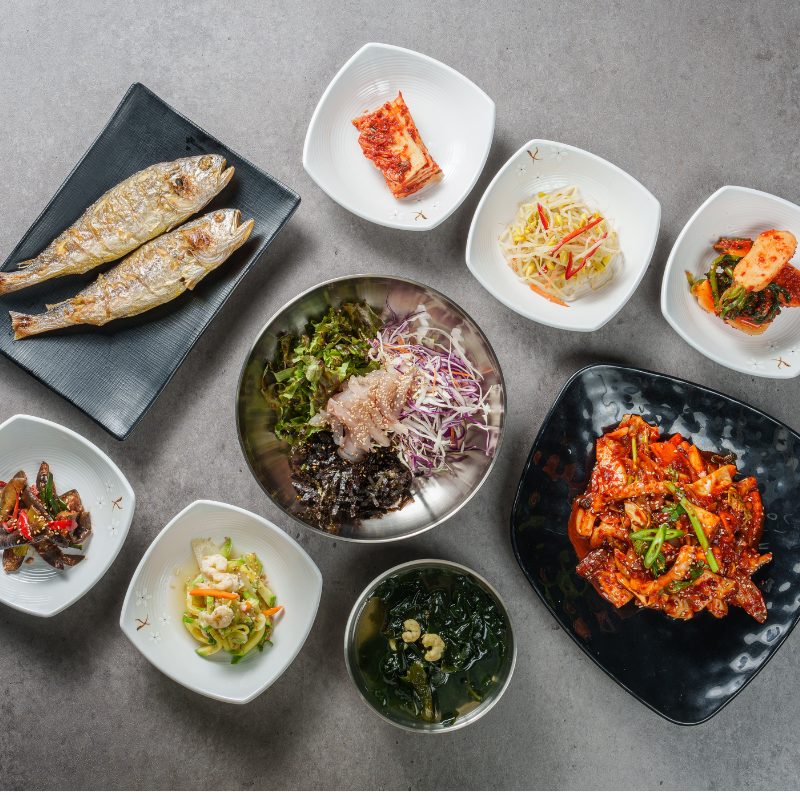
The Korean Breakfast Table : The Secret Behind a Slim & Healthy Body!
Share
Hi there, this is Ollie from OraeoLab!👋
When it comes to health and body maintenance, Koreans take their breakfast seriously.
It’s not about having a heavy meal, but about making every bite count with balanced nutrition, gentle flavors, and ingredients that support stable energy and digestion.
Let’s dive into what makes a Korean-style breakfast not only delicious, but smart for your health and blood sugar too!
The secret Korean Breakfast

🍚 1. Multigrain Rice: Choosing Nutrition Over White Rice
While rice is a staple in Korean cuisine, many people now opt for multigrain rice over plain white rice.
Typical grains include brown rice, barley, millet, sorghum, and beans.
🔎 Nutrition Tip:
Multigrain rice is packed with fiber and has a lower glycemic index, meaning it helps prevent blood sugar spikes and keeps you full longer.
White rice, on the other hand, is known to raise blood glucose rapidly—so it’s often avoided by those managing weight or diabetes.

🥬 2. Side Dishes Made with Vegetables
A traditional Korean breakfast includes a variety of lightly seasoned vegetables, such as namul (seasoned greens), stir-fried mushrooms, and sprout salads.
🔎 Nutrition Tip:
These sides are usually steamed or sautéed, not fried, and are full of fiber and antioxidants—great for gut health and steady energy.
Common Veggie Dishes:
✔️ Spinach seasoned with sesame oil and salt
✔️ Stir-fried mushrooms with perilla seed powder 🍄
✔️ Bean sprout salad
✔️ And of course, kimchi—a must-have!

🐟 3. Protein: Fish or Eggs
Protein plays a vital role in Korean breakfasts, often in the form of grilled fish like mackerel or croaker, or eggs—steamed, boiled, or even soft-scrambled.
🔎 Nutrition Tip:
Protein helps stabilize blood sugar, maintain muscle mass, and keep you satisfied longer—ideal for energy control throughout the day.

🍲 4. Soup: A Warm Start to the Day
A hot bowl of miso soup, seaweed soup, or radish soup often accompanies the meal.
🔎 Nutrition Tip:
Soup aids in hydration and digestion, while also helping to reduce the amount of rice consumed by filling you up gently and comfortably.

🧂 5. Low Sugar, Low Fat, Big Flavor
You won’t find much butter, sugar, or processed ingredients here.
Koreans flavor their food with natural seasonings like garlic, soy sauce, fermented bean paste, and sesame oil.
🔎 Nutrition Tip:
These ingredients support stable insulin levels, enhance digestion, and help avoid unnecessary calorie intake—all while keeping dishes flavorful and satisfying.

💡 Bonus: Fermented Foods for Gut Health
Fermented staples like kimchi, fermented soybean paste (doenjang), and gochujang are key parts of Korean cuisine.
🔎 Nutrition Tip:
They’re rich in probiotics, which support gut health, immunity, and even weight control.
Fermented foods also improve digestion and nutrient absorption naturally.
🥢 In Summary: Why Korean Breakfast Works
✔️ Smaller portions, but nutrient-dense
✔️ Balanced combination of grains, vegetables, protein, soup, and fermented foods
✔️ Uses traditional cooking methods to maintain nutrients and support blood sugar balance
